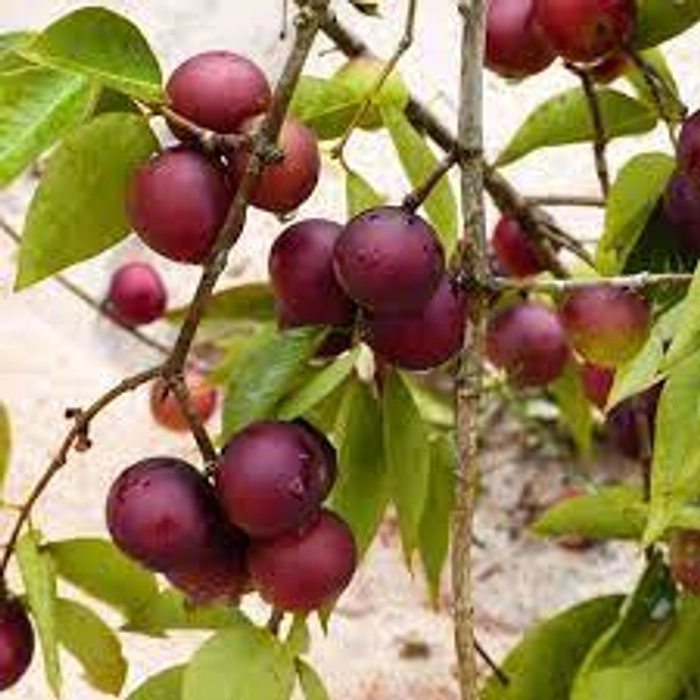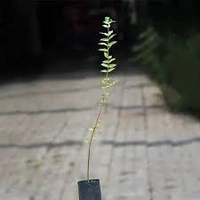Camu Camu Live Plants (Myrciaria Dubia)
Product description
Camu camu (Myrciaria dubia) is a small, bushy tree native to the Amazon rainforests of Peru, Brazil, Colombia, and Venezuela. It is primarily known for its small, tart, and extremely vitamin C-rich fruits. Here's a description of camu camu live plants:
-
Tree Appearance: Camu camu trees are typically small and shrub-like, reaching heights of about 3 to 5 meters (10 to 16 feet). They have dense, evergreen foliage and a relatively low-growing, spreading canopy.
-
Leaves: The leaves of camu camu trees are elliptical and dark green, with a glossy surface. They are arranged opposite each other on the branches.
-
Fruit: The fruit of camu camu is small, round, and about the size of a cherry or small grape, measuring approximately 1 to 2 centimeters (0.4 to 0.8 inches) in diameter. When ripe, the fruit is bright red to purplish-red in color, and it has a smooth, waxy skin. The flesh inside is very tart and acidic, with a flavor similar to that of a sour cherry or cranberry.
-
Seeds: Each camu camu fruit typically contains a few small seeds.
-
Flowers: Camu camu trees produce small, fragrant, and white flowers with five petals. The flowers are typically solitary or occur in small clusters along the branches.
-
Habitat: Camu camu trees are native to lowland tropical rainforests, particularly in areas near riverbanks and floodplains. They prefer areas with high humidity and plenty of rainfall.
-
Cultivation: Camu camu is grown primarily for its fruit, and it can be cultivated in regions with a tropical climate. It requires well-drained, acidic soils and plenty of water. The tree is sensitive to frost and does not tolerate extended periods of drought.
-
Nutritional Value: Camu camu is renowned for its extremely high vitamin C content, which is one of the highest among all fruits. It also contains other essential nutrients such as antioxidants and minerals.
-
Uses: Camu camu fruit is traditionally harvested and used by indigenous communities in the Amazon for its nutritional and medicinal properties. It is often consumed as a natural remedy for its potential health benefits, including boosting the immune system and providing antioxidant protection. In recent years, camu camu has gained popularity as a superfood and is used in various dietary supplements and health products.
-
Conservation Status: In its natural habitat, camu camu faces habitat destruction and deforestation threats. Sustainable cultivation practices are being promoted to reduce pressure on wild populations.
In summary, camu camu live plants are valued for their small, sour, and nutritionally rich fruits, which are particularly sought after for their exceptionally high vitamin C content. This tree has gained attention for its potential health benefits and is cultivated in tropical regions and utilized in various health and wellness products.
✦
You might like these
✦










